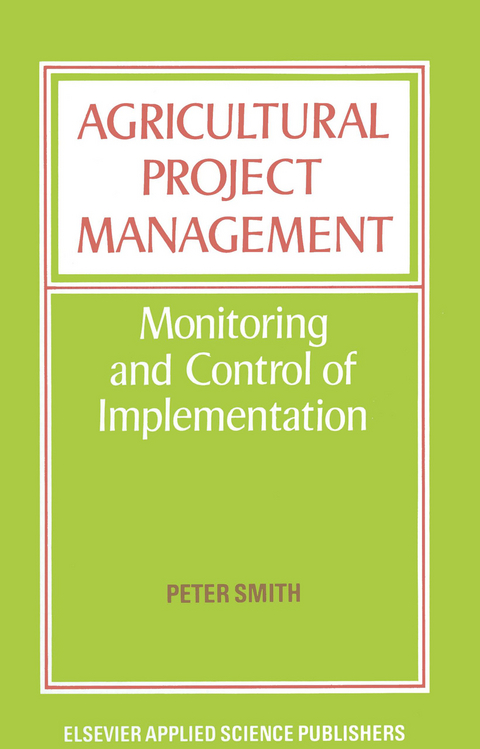
Agricultural Project Management
Springer (Verlag)
978-94-011-5935-7 (ISBN)
1. The Scope of Project Management.- 1.1. Introduction.- 1.2. Requirements of an Effective Project Management System.- 1.3. Traditional Methods of Controlling Agricultural Projects.- 1.4. Critical Paths—Introduction to an Improved Method.- 1.5. An Example of the Improved Method: Planning the Schedule.- 1.6. CPM and After.- 2. Solving the Critical Path Problem.- 2.1. The Example.- 2.2. The Network.- 2.3. The Main Objective: Finding the Critical Path.- 2.4. Tabulation of the Data.- 2.5. The Forward Pass—Calculating Early Start and Early Finish Dates.- 2.6. The Backward Pass—Calculating Late Start and Late Finish Dates.- 2.7. Float.- 2.8. The Critical Path.- 2.9. Review of the Initial Analysis.- 2.10. Alternative Methods of Network Construction.- 2.11. Note on Terminology.- 3. The Network: Collecting the Data.- 3.1. Introduction.- 3.2. The Initial Session.- 3.3. Specialist Sessions.- 3.4. The Next Step.- 4. Resource Scheduling.- 4.1. Definition of Scheduling.- 4.2. Determination of Resource Requirements of Activities.- 4.3. Determining the Availability of Resources.- 4.4. Assessing the Resource Requirements of the Initial Schedule.- 4.5. Resource Levelling.- 4.6. Consequences of Resource Levelling.- 4.7. Presentation of Results.- 4.8. Alternative Resource Scheduling Method.- 4.9. Multi-Project Scheduling.- 5. Review of Working Methods.- 5.1. Allocation of Extra Resources (Crashing).- 5.2. Adjusting the Specifications of the Job.- 5.3. Changes in Working Methods.- 5.4. Costing Savings on Major Alterations of Schedule.- 5.5. Conversion to Calendar Dates.- 6. Risk and Uncertainty in Project Scheduling.- 6.1. Introduction.- 6.2. Statistics.- 6.3. Expected Duration of Critical Path or Critical Segments.- 6.4. Testing for the Need to Revise Duration Estimates.- 6.5. Choiceof Probability Levels.- 6.6. Decision Networks.- 7. Critical Path Methods at the Planning Stage.- 7.1. Introduction.- 7.2. Getting the Framework Right.- 7.3. Problems of Data Gathering at the Planning Stage.- 7.4. Organisational Structure of the Project.- 7.5. Contractual Structure of Projects.- 7.6. Implications.- 7.7. Planning the Planning.- 8. Using the Network.- 8.1. Introduction.- 8.2. The Downward Flow of Information: Instructions and Advice.- 8.3. The Upward Flow of Information.- 8.4. Financial Reporting.- 9. Critical Path Analysis by Computer.- 9.1. Do You Really Need a Computer?.- 9.2. Computer Terms.- 9.3. Requirements of a Good CPA Software Package.- 9.4. Requirements of a Suitable Machine.- 9.5. Examples of Suitable Software.
| Zusatzinfo | 1 Illustrations, black and white; 190 p. 1 illus. |
|---|---|
| Verlagsort | Dordrecht |
| Sprache | englisch |
| Maße | 140 x 216 mm |
| Themenwelt | Naturwissenschaften ► Biologie ► Ökologie / Naturschutz |
| Technik ► Umwelttechnik / Biotechnologie | |
| Wirtschaft ► Betriebswirtschaft / Management ► Projektmanagement | |
| Weitere Fachgebiete ► Land- / Forstwirtschaft / Fischerei | |
| ISBN-10 | 94-011-5935-1 / 9401159351 |
| ISBN-13 | 978-94-011-5935-7 / 9789401159357 |
| Zustand | Neuware |
| Haben Sie eine Frage zum Produkt? |
aus dem Bereich


